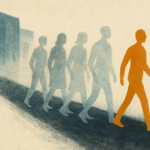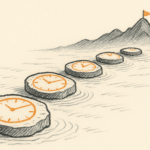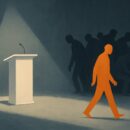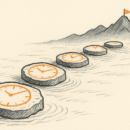How to have better meetings: no slides, no chairs
“How Jeff Bezos, Richard Branson, and other business chiefs hold ruthlessly effective meetings”
QUARTZ (19 June, 2013)
Meetings: we all hate them. They blight our working lives. They take up all the available time in our calendars, leaving next to no time to do what we should really be doing: thinking up new ideas; reflecting deeply on the changing business landscape; serving customers exceedingly well.
We’re not alone, though. Most of the great and the good business leaders face the same problem. Quartz helpfully gathered some of the more interesting ways to make meetings better, shorter and more effective.
Learn first from Richard Branson, he of the wild antics and dazzling smile: kill slide decks. Or at least, kill the mind-numbing presentations consisting of arrays of unnecessary text, graphs and numbers that bedevil most meetings. Use imagery and videos to make any point worth making; and then spend the rest of the time discussing that point and moving towards a decision. If people need detailed information, then make sure they received it in advance of the meeting – and make sure they read it before arriving.
Move on to the late Steve Jobs, he of the ruthless mien and pyrotechnic temper. Steve’s advice? Throw out the least necessary person in the room. In keeping with his excellent products, Mr Jobs liked to keep management simple, too. Unnecessary people in the room add clutter and take up time. Only those that matter to the matter at hand should be present. An interesting one in Kenya, where we are more likely to add numbers in order to cover our behinds and have more scapegoats available later…
Here’s Larry Page, founder and CEO of Google. His golden rule for meetings at Google: decisions don’t wait for meetings. If a decision can’t be taken without a meeting, that meeting must be convened immediately, using technology if necessary. I like. Keep the tempo up, and keep moving fast. In the world that Google competes in, rapid decision-making is absolutely vital. Those of you who have to wait months for a meeting of worthies to be convened to make the smallest decision, please take note.
Go even further: listen to Bob Sutton, iconoclastic professor. He suggests that when you do hold that meeting, remove something from the room: chairs. Meetings in which people can’t sit down will naturally be shorter, but they won’t necessarily be any worse. Once the chairs are gone, you may find people get to the point very fast.
If you must have chairs, however, then follow Amazon’s Jeff Bezos’s brilliant suggestion, and add an extra one – but keep it empty. The empty chair is the one the CUSTOMER sits in. So for every discussion you hold and decision you make, the customer is symbolically in the room. Bezos used to make all his lieutenants turn to the empty chair and ask: what would the customer say to this proposal? Is this decision for the customer’s good – or just for our own?
Meetings are vital, and we’re never really going to get rid of them. Human beings need to gather together and study faces and body language before making decisions. But we do have a burning need to make meetings less tiresome and more engaging. Your meetings are yours, and you can decide to adopt some of these tips from those who have truly changed whole industries. Or not. It all depends on what type of culture you’re trying to build in your organization. But do please find your own way to reform meetings. What we do today – meetings for every damn thing, meetings about meetings that have already happened, meetings to arrange other meetings – is too painful to survive.

Buy Sunny Bindra's new book
The X in CX
here »
Popular Posts
- Where are you rushing to—your funeral?June 29, 2025
- The map will appear—once you start walking.July 6, 2025
- We’re letting the bad drive out the goodJuly 20, 2025
- How to spot a real thinkerJune 15, 2025















